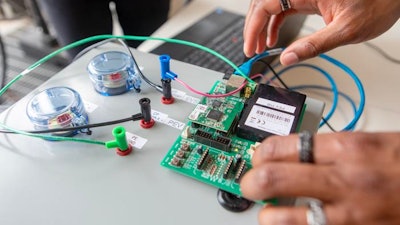
SAN ANTONIO – Engineers at Southwest Research Institute have identified cybersecurity vulnerabilities with electric vehicles (EVs) using direct current fast-charging systems, the quickest, commonly used way to charge electric vehicles. The high-voltage technology relies on power line communication (PLC) technology to transmit smart-grid data between vehicles and charging equipment.
In a laboratory, the SwRI team exploited vulnerabilities in the PLC layer, gaining access to network keys and digital addresses on both the charger and the vehicle.
The research is part of SwRI’s ongoing efforts to help the mobility sector and government improve automotive cybersecurity spanning embedded automotive computers and smart-grid infrastructure. It builds upon a 2020 project where SwRI hacked a J1772 charger, disrupting the charging process with a lab-built spoofing device.
In the latest project, SwRI explored vehicle-to-grid (V2G) charging technologies governed by ISO 15118 specifications for communications between EVs and electric vehicle supply equipment (EVSE) to support electric power transfer.
The SwRI team developed an adversary-in-the-middle (AitM) device with specialized software and a modified combined charging system interface. The AitM allowed testers to eavesdrop on traffic between EVs and EVSE for data collection, analysis and potential attack. By ascertaining the media access control addresses of the EV and EVSE, the team identified the network membership key that allows devices to join a network and monitor traffic.
However, encrypting embedded systems on vehicles poses several challenges. For instance, added layers of encryption and authentication could even become a safety hazard. A failure to authenticate or decrypt could interrupt a vehicle’s functionality or performance.
SwRI has developed a zero-trust architecture that can address these and other challenges. It connects several embedded systems using a single cybersecurity protocol. SwRI’s future EV cybersecurity research will test zero-trust systems for PLC and other network layers.






















